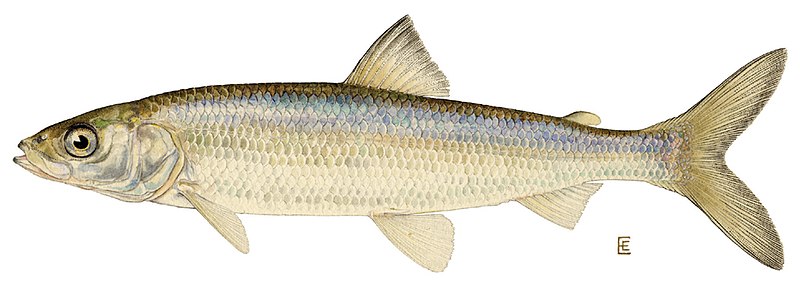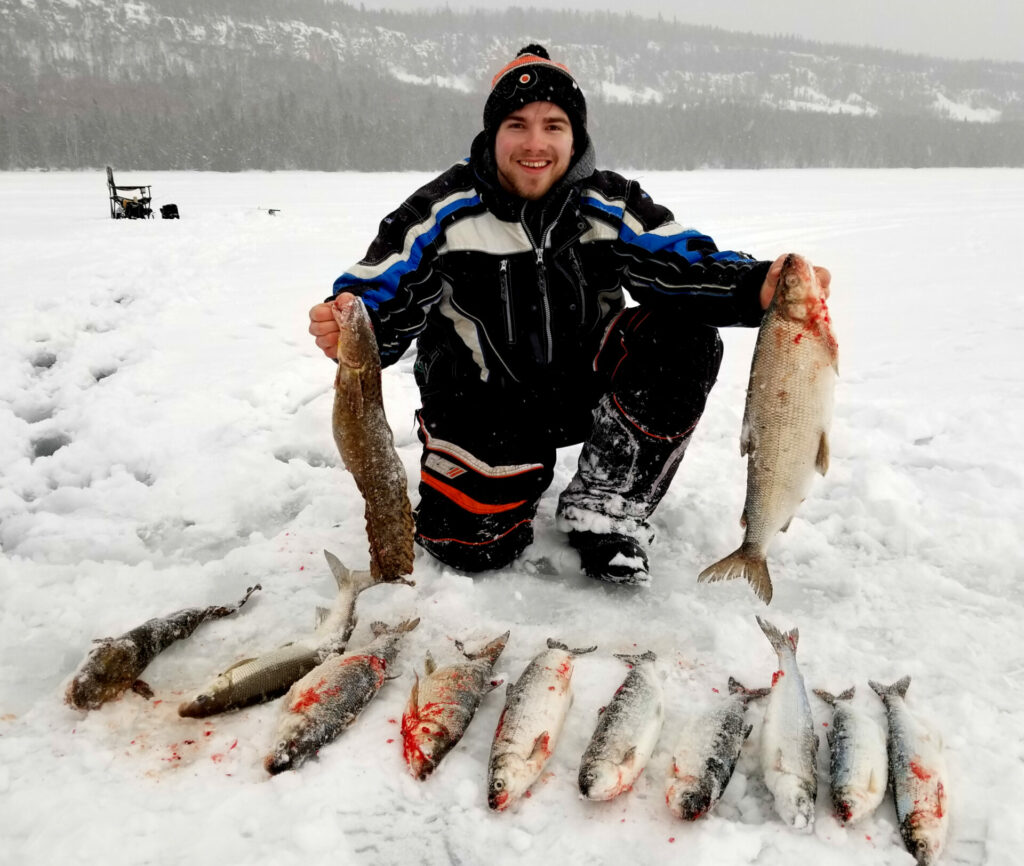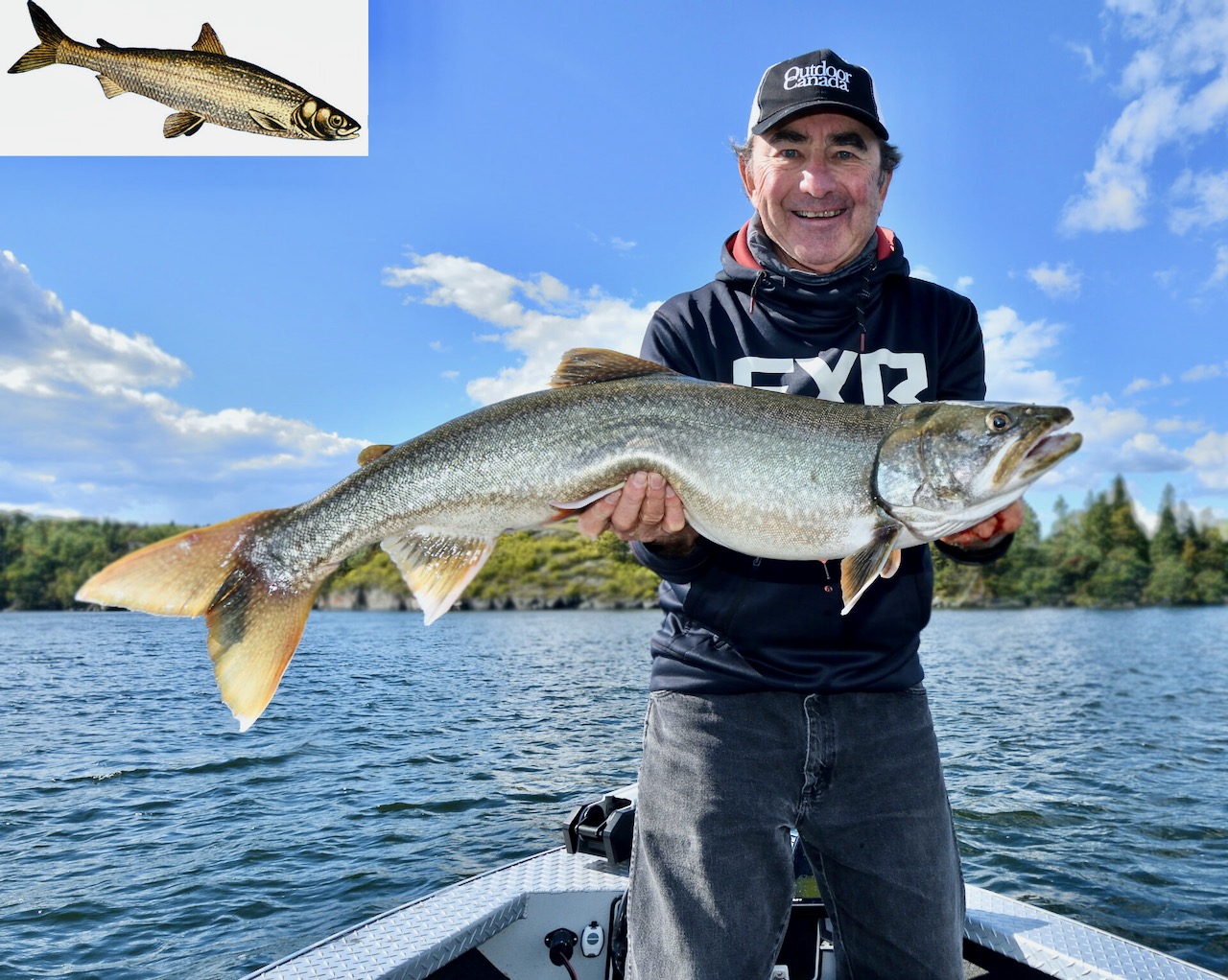EVERYTHING EATS CISCOES
New research shows these silvery baitfish are essential for growing big gamefish
Advertisement

Gotta’ confess, few fish fascinate me more than ciscoes (above), the soft-rayed silvery fish that are also known as lake herring and tulibees. They are salmonids like trout, char, grayling and salmon, and they are fun to catch and superb eating if you prepare them properly—especially smoked. But, perhaps more important than anything else, ciscoes are often the primary prey species in many lakes across Canada. And their role as prey is so important that as the ciscoe population rises and falls in our favourite lakes, so do the numbers of lake trout, walleye, bass and pike.
I recently wrote an On the Water Online blog about failing ciscoe populations and it sparked several interesting comments and discussions, none more thought-provoking than the one I enjoyed with Christian Therrien. Christian is a researcher and PhD candidate at the University of Waterloo. His efforts are focused on improving the reintroduction of native fish species like Atlantic salmon, trout and char (lake trout and brook trout), and the interactions between native species like ciscoes and invasive critters like rainbow smelt.
Advertisement
As a matter of fact, Christian’s PhD thesis is titled, The influence of invasive species on native species reintroductions: Ontario’s lake trout reintroduction, and it is truly mind-blowing, ground-breaking stuff. He’s looked at the interaction between invasive smelt and native ciscoe populations and their effects on lake trout. I am currently sworn to secrecy about the specifics because Christian is presenting the pioneering results at an upcoming international charr symposia in Nikko, Japan. But I can say this: never, ever put invasive smelt in a trout lake. ‘Nuff said.
The other cool thing I discovered about Christian is that as well as being a top-flight biologist and fisheries researcher, he’s also an avid angler and hunter. So he has a foot planted on both sides of the street. I needed to know why he is so enthralled with ciscoes.
“My grandfather was a guide and avid lake trout angler in the Chiniguchi and Temagami regions of Northeastern Ontario,” he told me, “and he’d recount stories of titanic lake trout being caught with regularity. Nowadays, catching a 27-inch lake trout is a rarity. So I spent much of my youth wondering why the fishing was so good back then, as opposed to now. I learned that ciscoes have been extirpated (wiped out) in several lakes in Northeastern Ontario because of acid rain deposition, due to nickel smelting in Sudbury. As a result, some of those lakes now lack the large, high-fat, pelagic prey fish that help produce large, trophy-size lake trout.”
Advertisement
“I also learned that the presence of ciscoes and other coregonines (members of the whitefish and cisco sub-family) can totally change the growth trajectory, age of sexual maturity and life span of lake trout populations. They can even save trout from extirpation after exotic species like smelt invade a lake. The fact that a prey fish alone can totally change the lake dynamics and life history of predators absolutely captured my imagination.”
Therrien also told me that he was caught off guard at first by the diversity of ciscoe populations. They have a dizzying array of phenotypes (forms) and their shape, colouration, and size can change after a short time—short in evolution terms, that is—once they enter a new environment. “Currently, eight species of ciscoes have been identified in Ontario, with several forms and subspecies whose taxonomy has yet to be resolved,” he explained. “Ciscoes in Ontario range from the Kiyi, a small cisco species that lives in the depths of Lake Superior and feeds on plankton, to the blackfin cisco that can reach well over 20 inches in length, and feeds primarily on invertebrates and fish.”
Advertisement

Knowing how enthusiastically lake trout, walleye and even muskies seek out ciscoes to eat, I asked Therrien if there is a way anglers could track schools of the fish. Or instead, are the open water movements of ciscoes totally unplanned?
“We know that their movements are not truly random,’ he says. “Several factors including the time of day, day length, food availability, predation risk, growth rate, water temperature, thermocline depth, weather events, wave action and other climatic factors drive cisco movements. Fisheries managers are now using models that incorporate all these factors to predict cisco movements, and tagging studies now suggest these models are valid. Keeping a personal fishing diary with detailed notes on your catches can help you predict where ciscoes may be in your favourite lake, and help you land more fish.”
Indeed, in Part Two next week, we’ll delve much deeper into the feeding habits of ciscoes. Then I’ll explain the ways we can incorporate this new science into our fishing strategies to catch more and bigger lake trout, walleye, and—are you ready for this—big toothy critters like muskies and northern pike.
Stay tuned.

